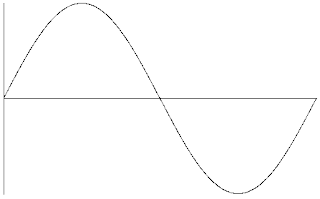808 References
808 this, 808 that... I've noticed this lyrical pattern for a while but, before I got into electronic music, I had no idea what everyone was talking about with their 808 "Bumps," "Beats," "Bass," and "Booms." And if that bundle of breviloquent B-words didn't tip you off already, what these lyrics are referencing is a drum track. More specifically, they mean one produced by the Roland TR-808 drum synthesizer, endearingly referred to as simply the "808."Naming the 808 mid-song (or dedicating your entire song/album title to it) is a testament to how popular this thing is. Though sometimes the sounds are heavily processed, an enormous amount of the hip-hop, R&B, dance, and electronic music you'll hear on the radio uses some incarnation of the TR-808 for its rhythmic backing. This includes most of the clips you just listened to. You're probably familiar with many of those tunes. They're all relatively recent, especially considering that the drum technology they're serenading is from the early 1980s — the veritable stone age of synthesizers! Listen:
Roland TR-808 Samples
The simplest answer I could find is that it was cheap in its day, which always helps build a following. With hip-hop being a youthful genre void of any glamour at the time, aspiring emcees who just needed a few beats behind them always preferred a modest price tag, even when better drum machines were available. (Early Beastie Boys stuff, for example, features some pretty hot 808 action.) Over time, the artificial drum sounds became an integral part of that urban hip-hop flavor.
But there's more to it. The most interesting thing the TR-808 has going for it is its killer kick drum whose emulation errs in an intriguing way. Listen to the first sound in that 808 sample clip again then check out what you find when you do a waveform analysis of it:
 |
| Horizontal axis = time (seconds). Vertical axis = loudness (decibels) |
First notice how the 808 kick takes almost zero time to get loud. In both drum and synth lingo, the time it takes a sound to initiate and get loud is called the attack. The faster the attack, the sharper it sounds to us. (recall my post on saw waves.) Also notice that the 808 kick oscillates at a much higher frequency near the beginning. This translates to a very high pitch that lasts about 1/300 of a second before dropping. It happens so fast you don't even know you've heard it until it's gone, but that rapid change in pitch gives the initial attack an extra little "pop" sound for emphasis. The equivalent pitch drop on the real kick drum isn't nearly dynamic enough to accomplish that feat.
My favorite part of this comparison, though, is the fact that the 808 kick drum sustains a low pitch for way longer than a real kick drum does. And it's louder! A sharp attack plus a loud and long bass tone means the whole sound hits you fast and hard, in that order. A heavier sound makes for a more visceral reaction to it, and that's where we find much of the TR-808's lasting charm. Modulate those sounds in the right way and you get the foundation for pretty much every energetic electronic genre out there. And when things like house, trance, and dubstep converge with the aforementioned "urban hip-hop flavor," you get the 808-saturated pop music we hear today.
Even if you're not using the 808, referring to it in your lyrics is a quick gimmick to make you sound like a cooler, more mature musician who understands his or her musical roots. Some genres have become practically defined by "that 808 bump." As a rough demonstration, here are two of my own tracks. They have similar rhythmic styles, but one features an 808 drum kit and one doesn't:
Even if you're not using the 808, referring to it in your lyrics is a quick gimmick to make you sound like a cooler, more mature musician who understands his or her musical roots. Some genres have become practically defined by "that 808 bump." As a rough demonstration, here are two of my own tracks. They have similar rhythmic styles, but one features an 808 drum kit and one doesn't:
"AMP 2.2"
|
*Yawn...* A standard, vanilla drum synth. I made this as a teenager, well before I knew what the TR-808 was. It's dance-able, but I had to make the other synth instruments work extra hard to compensate for the fact that I just didn't know how to get the percussive power needed to make this track sound the way I thought it should. |
"Flaming Squash"
| Ah, that's better! The 808 isn't absolutely necessary here, but an 808-style wave profile is. Without that characteristic attack and bass, this wouldn't feel like proper trance music. Far East Movement said it well: "That 808 bump make you put your hands ups." |
Like many synthesizers, the TR-808 was originally meant as a replacement for an acoustic instrument. With respect to serving that purpose, no one will disagree that the TR-808 is obsolete. However, the sounds are now so departed from what we would consider a realistic drum synthesis that the technological limitations of 1980s offer 21st century musicians sounds in a category all their own. And the people who accepted the 808's musical potential for what it was at the time instead of trashing it the minute a slightly better drum approximation became available were the ones who pioneered entirely new genres of music.
It's almost impossible to escape the influence the TR-808 has had over the past thirty years. The sounds are now staples of dance club music and are about as celebrated as the Friday nights during which they get played. Some group of people even went so far as to honor the renowned drum machine with its own day. "808 Day" is a novel holiday that pays tribute to the device whose penetrating drums beat the path for a good chunk of modern music. Quite predictably, it occurs every year on 8-08. And quite incidentally, that's also my birthday.
So...I think I know what my birthday is going to sound like next year. Don't worry about showing up to the party — you'll hear it from where you are.
It's almost impossible to escape the influence the TR-808 has had over the past thirty years. The sounds are now staples of dance club music and are about as celebrated as the Friday nights during which they get played. Some group of people even went so far as to honor the renowned drum machine with its own day. "808 Day" is a novel holiday that pays tribute to the device whose penetrating drums beat the path for a good chunk of modern music. Quite predictably, it occurs every year on 8-08. And quite incidentally, that's also my birthday.
So...I think I know what my birthday is going to sound like next year. Don't worry about showing up to the party — you'll hear it from where you are.





















